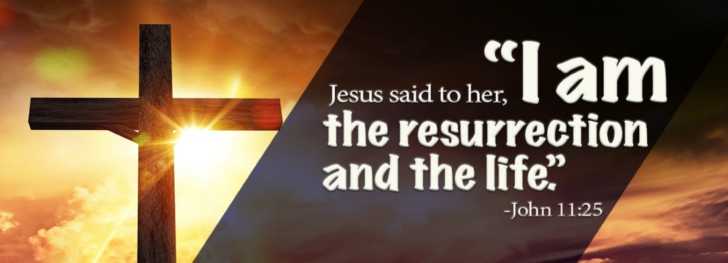
“I am the resurrection and the life; whoever believes in me, even if he dies, will live, and everyone who lives and believes in me will never die” (John 11:25-26). Jesus gives this “I Am” statement to Martha, the sister of Lazarus, who has died. She had sent for Jesus when Lazarus was ill, but he did not arrive in Bethany until after Lazarus had died. She hears that he is drawing near and goes out to meet him.
When she meets Jesus, we can hear a little breath of momentary bitterness in her voice shaped by her sorrow at the loss of her beloved brother. She says, “If you had been here my brother would not have died” (verse 21). Then you hear her faith and hope in Jesus rising up above her sorrow as she says, “But even now I know that whatever you ask of God, God will give you” (verse 22). And the dialogue continues between them: Jesus says, “Your brother will rise. Martha said to him, ‘I know he will rise, in the resurrections on the last day” (verses 23-24). She shows her depth of faith in the idea of of the Last Day and the hoped for resurrection here. But, then, Jesus puts a whole new idea into her head, and ours, when he tells her that “I Am the resurrection and the life.”
With that “I Am” statement we have come, along with Martha, face to face with the reality of who Jesus is. He is the I Am Who Is from the beginning. Through him all things came to be (see John 1:2-3). He is, at once, the Ground of Being, and the Savior. Only he could make such a statement as, “I AM the resurrection and the life.” It is in him that we live and move and have our being. He is the only One who could be fully God and fully Man, the only One who could love so magnanimously as to enter into our suffering and death, in order to forgive us all of our sins and free us from our slavery to sin and death forever, through the life giving paradox of the cross and the resurrection. When Jesus says, “I Am,” we are to hear the voice of God the Father in and through Jesus.
When we look at this passage deeply we see that life is its predominate theme. That is both our mortal life, as Jesus raises Lazarus from the dead, and our eternal life that is ours, paradoxically, through Jesus’ death on the cross. As this story unfolds from the beginning verse of chapter 11 to verse 44, we see Jesus’ ultimate purpose as he explains to the disciples why he is not going to Bethany right away (see verses 4,9-10,13,and 15) and up to the final dramatic moment when he, “cries out in a loud voice, ‘Lazarus, Come out!’” (verse 43). He does all of this so that the Jews and everybody present (and we who encounter the story today) would see the glory of God and believe in him. “Did I not tell you that if you believe you will see the glory of God?” (verse 40). It is the glory of God (“I AM”) that we witness here. We see in Jesus the face and the very nature of the Father, the “I AM” who is the only One who can bring about the resurrection of the body and the soul. And even though he raised Lazarus from the dead, many did not believe. In fact, it is right after this event that the Sanhedrin decides to do what it takes to kill Jesus.
Lord, You are the I Am in whom our whole existence finds its genesis and its salvation. We bow before your glory and we bend our knees in your presence. In our weakness, we ask you to strengthen us in faith, hope, and love, so that we may be true to you in all that we think, say, and do in our daily lives. We pray this in your most holy name, Jesus. Amen!
Want more daily devotionals, inspirational verses, and Bible reading plans? Just choose a plan and sign up for a free eBible account. It’s that simple! CLICK HERE!
SKM: below-content placeholderWhizzco for FHB

